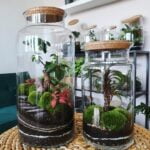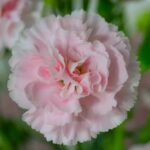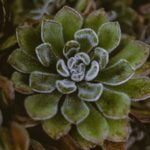Are you looking for creative ideas for herb gardens? Herb gardens are not only beautiful but also provide a plethora of benefits, from enhancing the flavors of your favorite dishes to promoting overall wellness.
In this article, we will explore different types of herbs for culinary and medicinal use, essential tools and equipment needed, as well as tips for location and space, design and layout, maintenance and care, companion planting, and harvesting and preserving. Whether you’re a seasoned gardener or just starting out, we’ve got you covered with everything you need to know about creating your own herb garden.
When it comes to herb gardens, the possibilities are endless. From basil and mint to lavender and thyme, there are numerous options to consider based on your personal preferences and needs. Furthermore, we will discuss how to properly maintain your herb garden through watering, fertilizing, and pruning techniques.
We’ll also delve into the concept of companion planting – pairing herbs with other plants to promote growth and deter pests. Lastly, we’ll provide valuable tips on harvesting and preserving your herbs to enjoy their benefits all year round.
Cultivating your very own herb garden is not only a rewarding hobby but also a practical way to add fresh flavors and health benefits to your everyday life. Join us as we embark on this journey to explore the beauty and benefits of herb gardens while learning how to create our own little oasis filled with nature’s goodness.
Types of Herbs to Consider
When starting an herb garden, it’s crucial to choose the right herbs for your needs. Whether you’re interested in cultivating herbs for culinary purposes or for their medicinal benefits, there are plenty of options to consider. Here are some popular choices for both uses:
- Basil: This versatile herb is a staple in many cuisines and is known for its strong aroma and flavor. It’s perfect for making pesto, adding to salads, or garnishing pasta dishes.
- Thyme: With its earthy and slightly minty flavor, thyme is a great addition to meat dishes, stews, and soups. It also has medicinal properties and can be used to make tea that helps with coughs and sore throats.
- Lavender: Known for its calming and soothing effects, lavender is not only a beautiful addition to any garden but also has several medicinal uses. It can be used to make tea, sachets, or even added to baked goods for a subtle floral taste.
- Mint: This refreshing herb is perfect for making teas, cocktails, or adding flavor to desserts. It’s also known for its digestive properties and can help alleviate stomach discomfort.
In addition to these popular choices, other herbs such as parsley, rosemary, cilantro, and chamomile are also great options for both culinary and medicinal purposes. When choosing which herbs to grow in your garden, consider your personal preferences as well as the climate and growing conditions in your area.
Whether you’re looking to enhance the flavors of your favorite meals or reap the health benefits of natural remedies, incorporating these herbs into your garden will surely bring joy and satisfaction as you watch them flourish and thrive.
Essential Tools and Equipment: What You Need to Start Your Own Herb Garden
Remember that each type of soil specifically relates best towards certain plants. Well-draining soil works perfectly with most varieties like rosemary and lavender so bear this in mind before planting.
Essential Tools and Equipment
When starting your own herb garden, it’s important to have the right tools and equipment to ensure that your plants thrive. One essential item is a set of high-quality gardening gloves to protect your hands while tending to your herbs. A small hand shovel or trowel will also be helpful for planting and transplanting your herbs. Additionally, a watering can with a fine rose attachment is perfect for gently watering your delicate herbs without causing damage.
Another essential item for your herb garden is a pair of pruning shears or scissors. These will come in handy for trimming and harvesting your herbs as they grow. You may also want to consider investing in a small rake or hoe for weeding and aerating the soil around your plants. Finally, having some basic fertilizer on hand will help promote healthy growth in your herb garden.
In addition to tools, there are some basic pieces of equipment that you will need to start your herb garden. A sturdy set of pots or planters, as well as good quality potting soil, are essential if you plan on growing herbs indoors or in a small outdoor space.
If you have the luxury of more outdoor space, consider investing in a good quality garden hose with an adjustable nozzle for easy watering. Lastly, if you live in an area with unpredictable weather or harsh winters, consider purchasing some row covers or protective gear to shield your herbs from the elements.
| Essential Tools | Essential Equipment |
|---|---|
| Gardening Gloves | Pots or Planters |
| Hand Shovel or Trowel | Potting Soil |
| Watering Can with Rose Attachment | Garden Hose with Nozzle |
| Pruning Shears or Scissors | Row Covers/Protective Gear (if necessary) |
Location and Space
When it comes to choosing the right spot for your herb garden, there are a few key factors to consider. First and foremost, most herbs thrive in well-drained soil and require at least 6-8 hours of sunlight per day.
As such, it’s important to select a location that receives ample sunlight and has good drainage. If you’re limited on space, keep in mind that many herbs can also be grown in containers on a sunny balcony or windowsill.
Another important consideration is proximity to your home. Most people prefer to place their herb gardens near their kitchen for easy access when cooking. This not only makes it convenient to snip fresh herbs while preparing meals but also adds a pleasant aroma to the surrounding area.
Additionally, when planning the location of your herb garden, take into account the specific needs of different herbs. Some may prefer more shade or partial sun, so it’s helpful to research the individual requirements of each herb you plan to grow. By carefully considering these factors, you can create an ideal environment for your herbs to thrive.
| Location | Space Requirements |
|---|---|
| Well-Drained Soil and Sunlight | At least 6-8 hours of sunlight per day |
| Proximity to Home | Near kitchen for easy access and aroma |
| Specific Herb Needs | Consider individual requirements for each herb |
Design and Layout Ideas
When it comes to designing and arranging your herb garden, there are plenty of creative ideas to consider. Whether you have a small balcony or a spacious backyard, the layout of your herb garden can not only make it visually appealing but also functional and easy to maintain. Here are some design and layout ideas to inspire your herb garden:
Vertical Herb Garden
If you’re limited on space, consider creating a vertical herb garden. This can be achieved by using wall-mounted planters, hanging baskets, or even repurposing a wooden pallet to create a vertical garden. Not only does this maximize space, but it also adds a unique and eye-catching element to your outdoor or indoor area.
Spiral Herb Garden
A spiral herb garden is not only visually stunning, but it also allows for different microclimates within the same space, making it suitable for various types of herbs. This design involves creating a raised bed in the shape of a spiral, with the center being the highest point and gradually sloping down towards the edges. This design not only looks beautiful but also creates different growing conditions for sun-loving herbs on top and shade-tolerant herbs at the bottom.
Herb Wheel
For those who want a symmetrical and organized layout for their herb garden, an herb wheel is an excellent option. It involves dividing a circular bed into segments like a pie, with each segment dedicated to different types of herbs. This not only makes it easy to access and care for each type of herb but also creates an aesthetically pleasing display.
By implementing one of these creative design ideas for your herb garden, you can make your outdoor or indoor space both functional and beautiful while enjoying the benefits of fresh herbs at your fingertips. These layouts can be tailored to fit any space and personal preferences while creating an attractive area that will enhance any home or garden environment.
Maintenance and Care
Watering Your Herbs
One of the most important aspects of maintaining a healthy herb garden is proper watering. Different herbs have different watering needs, so it’s essential to understand the specific requirements of each plant. Generally, most herbs prefer well-drained soil and should be watered when the top inch of soil feels dry to the touch. Overwatering can lead to root rot, so it’s crucial not to let your herbs sit in standing water for prolonged periods.
Fertilizing Your Herbs
Fertilizing your herb garden is another crucial aspect of maintenance. While some herbs are low-maintenance and don’t require much fertilization, others can benefit from regular feedings. Organic fertilizers like compost or worm castings are ideal for herb gardens, as they provide essential nutrients without the risk of chemical build-up. It’s best to fertilize your herbs in the spring when they are actively growing and then again halfway through the growing season if needed.
Pruning Your Herbs
Pruning is an important part of caring for your herb garden, as it helps promote healthy growth and prevent overcrowding. Regularly pruning your herbs not only keeps them looking tidy but also encourages new growth and helps maintain a compact shape. When pruning, make sure to use sharp, clean scissors or pruners to avoid damaging the plants.
Remove any yellowing or dead leaves, as well as any overgrown or leggy stems. Additionally, harvesting your herbs regularly can also serve as a form of pruning and encourage bushier growth.
By following these best practices for watering, fertilizing, and pruning your herbs, you can ensure that your herb garden thrives and provides you with a bountiful harvest throughout the growing season. Each step plays a vital role in maintaining healthy and robust herb plants that will continue to flourish year after year.
Companion Planting
Companion planting is a gardening technique that involves planting different types of plants together to enhance growth, attract beneficial insects, and deter pests. When it comes to herb gardens, companion planting can be an effective way to promote the health and well-being of your herbs while also adding visual interest to your garden space. Here are some popular companion plant options to consider for your herb garden:
- Mint: Planting mint near cabbage, tomatoes, and peppers can help deter pests like ants, aphids, and flea beetles.
- Chamomile: This herb is known to improve the flavor of savory herbs like basil and mint. It also attracts beneficial insects like hoverflies and wasps.
- Lavender: Planting lavender near roses, sage, and thyme can help repel moths, fleas, and other common garden pests.
In addition to these specific examples, it’s important to consider the overall needs of your herbs when choosing companion plants. Some herbs thrive in dappled shade while others prefer full sun, so be mindful of these requirements when selecting companion plants for your herb garden.
When planning your herb garden layout, think about creating intentional pairings that not only benefit the herbs themselves but also create a visually appealing display. Consider incorporating flowers that bloom at different times throughout the season to provide continuous nectar sources for pollinators.
Incorporating companion planting into your herb garden not only promotes healthy plant growth but also adds a layer of complexity and beauty to your outdoor space. Embracing this practice can result in a harmonious and thriving garden that you can enjoy all season long.
Harvesting and Preserving
Once you have successfully grown your herb garden, it is essential to know the proper techniques for harvesting and preserving your herbs for future use. There are several methods for collecting and storing herbs, each designed to maintain their flavor and potency.
The best time to harvest your herbs is in the morning, after the dew has dried but before the sun becomes too strong. Using clean and sharp gardening shears, cut the herbs just above a set of leaves to encourage bushier growth. It is important not to remove more than one-third of the plant at a time to allow for continual growth throughout the season.
After harvesting, you can preserve your herbs using different techniques such as air-drying, oven-drying, or freezing. Air-drying works well for low-moisture herbs like rosemary and thyme, while delicate herbs like basil and parsley can be preserved by freezing them in ice cube trays with water or olive oil. Another popular method is creating herbal vinegar or oils by infusing fresh herbs with vinegar or oil, which can be used for cooking or as salad dressings.
When storing your dried or frozen herbs, it is vital to keep them in airtight containers away from direct sunlight and moisture. Label each container with the herb name and date of preservation to ensure freshness and potency. By preserving your harvested herbs properly, you can enjoy the flavors and benefits of your herb garden year-round.
Conclusion
In conclusion, creating and maintaining your own herb garden can be a rewarding and enjoyable experience. From the satisfaction of watching your plants grow to the convenience of having fresh herbs at your fingertips, there are numerous benefits to embracing this gardening journey. Whether you’re interested in exploring new flavors in your cooking or harnessing the medicinal properties of herbs, there are endless possibilities when it comes to incorporating herbs into your daily life.
By considering the types of herbs that best suit your needs and understanding the essential tools and equipment required, you can confidently embark on the exciting adventure of herb gardening. Furthermore, taking the time to carefully select the location and design layout for your garden will ensure optimal growth and visual appeal.
And with proper maintenance and care, as well as strategic companion planting techniques, you can cultivate a thriving herb garden that enhances both your culinary creations and overall garden space.
As you embrace the joys of cultivating your own herb garden, remember to take pleasure in the process of harvesting and preserving your herbs for future use. Whether you’re drying them for long-term storage or using fresh cuttings straight from the garden, savoring each step of this journey will only deepen your appreciation for these versatile plants.
So why not start planning and establishing your very own herb garden today? The possibilities are endless when it comes to creating a beautiful and bountiful space filled with nature’s botanical treasures.
Frequently Asked Questions
What Is the Best Layout for a Herb Garden?
The best layout for a herb garden depends on the available space, climate, and personal preferences. Generally, herbs should be planted in rows or sections based on their sunlight and water requirements to ensure healthy growth.
What Herbs Should and Should Not Be Planted Together?
When deciding which herbs to plant together, it’s important to consider their growing habits and needs. For example, aggressive spreaders like mint should be planted separately to prevent them from overtaking other herbs. Compatible herbs like basil, thyme, and oregano can be grown together as they have similar water and sunlight needs.
What 3 Herbs Can Be Planted Together?
Basil, parsley, and chives are three herbs that can be planted together in the same garden bed. These herbs complement each other well in terms of care requirements and even flavor profiles when used in cooking. This trio is a great combination for a beginner herb garden.

Welcome to my gardening blog! I am passionate about plants and enjoy sharing my knowledge and experiences with others. In this blog, I will write about everything related to gardening, from tips on how to get started to updates on my own garden projects.





